Ask just about anyone to give a rough definition of a customer journey, and they’ll be able to provide a pretty good answer along the lines of “The customer journey is the route someone takes from being unfamiliar with a brand/business/product to becoming a customer.”
But such a simple definition would never do for us marketers! We call it a marketing funnel: A funnel that has different stages that are distinct depending on the types of marketing you’re involved in.
Now we’ve stroked your egos, here’s what we’re going to get into in this article:
- The basics: The classic B2B marketing funnel + its stages
- The intermediate: The customer retention funnel + its stages
- The advanced: Custom B2B marketing funnels: The B2B email marketing funnel and the content marketing funnel
- B2B marketing funnel optimization and analytics
The basics: The classic B2B marketing funnel
First things first, why a funnel of all things? Sadly, it’s not because it’s a cool shape or you can do cute things like putting the “FUN” back in “B2B marketing FUNnel.”
It’s based on pragmatism: At every stage of the customer journey, you’re going to have people drop out, so the number of people following the journey gets smaller.
So what are the stages of your classic B2B marketing funnel?
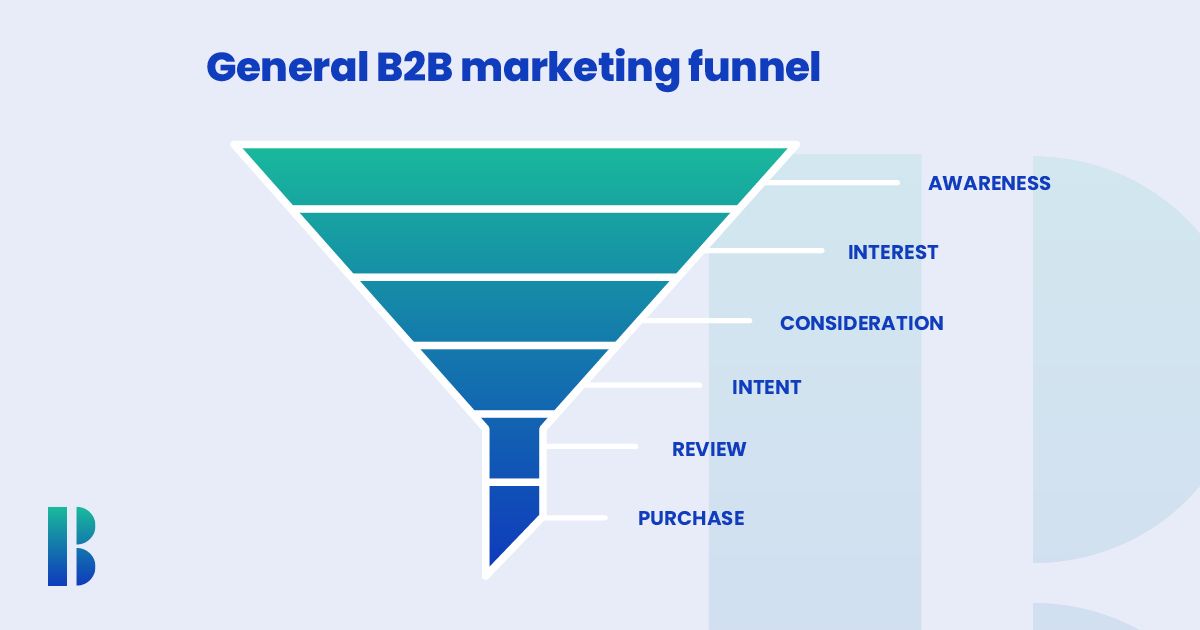
Stage 1: Awareness
At the top of the funnel is awareness. This refers to everyone in your target market who knows about your company and the products and services you offer. Whether they’ve come across it through your marketing, a Google search, word of mouth, or anything else. So of course, this is the broadest stage of the B2B marketing funnel.
That said, it doesn’t need to be ridiculously broad. The whole world doesn’t necessarily need to know about your company when it comes to B2B, rather you want the right people in the right industries to know who you are.
This stage is also often referred to as lead generation.
Awareness building tactics/content:
- Social media (both paid and organic)
- PPC (pay-per-click)
- SEO
- Content (blogs, videos, reports, etc.) that your target market is likely to search for related to your products/services
- Trade shows
- Word of mouth/ambassadorship (we’ll get to this later)
- Print (trade magazines, posters)
- Television (not super common in B2B marketing but you still see it from time to time)
- Website*
Stage 2: Interest
Now your target market knows who you are, it’s time to pique their interest. While not everyone in the awareness stage is going to have moved here, it’s still a fairly broad stage if you’ve targeted your awareness-building tactics appropriately.
This is when buyers begin exploring the products and services that might be of use to their business.
They’ll take a look at what you offer, and maybe check a few reviews to suss out whether you’ve got what they need.
There’s some debate about whether this fits in the lead generation or lead nurturing sections of the marketing funnel, but really it sort of straddles both.
Interest building tactics/content:
- Landing pages (e.g. Company “About us”)
- Product pages and descriptions
- Product demo videos
- Customer reviews and testimonials
- Case studies
- Website*
Stage 3: Consideration
Now you’ve got a selection of people and businesses interested in your products, it’s time to start convincing them to become your customers.
They’ll start looking at your products and brand in depth, compare you to similar companies, and start working out how you would fit into their business process.
An aspect of this stage that’s unique to the B2B marketing funnel, as opposed to B2C, is that the person who has been in the funnel so far will usually have to gather materials to show the stakeholders, and it’s up to you to provide all that for them.
Often at this stage, they’ll have become Marketing Qualified Leads (MQLs), where they’ve agreed to more direct forms of marketing. They might have created an account on your site, agreed to be sent emails, or had their first interactions with a member of your marketing or sales team (either digitally or otherwise).
This is where you really get the ball rolling on lead nurturing.
Consideration tactics/content:
- Case studies and testimonials
- Thought Leadership building content (blogs, whitepapers, videos, etc.)
- In-depth product demos
- Free trials
- Direct marketing (live chats, email marketing, telemarketing)
- Website*

Stage 4: Intent
This deep into the B2B marketing funnel, you might think you’ve got them in the bag, especially at this stage. Here’s where your prospects may have literally said that they’re interested in buying from you, but there are still plenty of opportunities for them to drop out of the funnel if you don’t handle it properly.
Traditionally, this is where the sales team moves in. Still, the lines between sales and marketing are often blurred (and the marketing department will often be involved in producing materials for this stage anyway).
This is where you pull out all the stops with top-level product demos and sales pitches, your product/service trials, and highlighting the benefits you offer.
This is peak lead nurturing time with a bit of lead conversion.
Intent tactics/content:
- Pitches
- In-depth product demos
- Free trials
- Your sales team
- Website*

Stage 5: Review
You’ve laid everything on the table, now it’s time for the decision-makers of the company to go through and evaluate the products and services you’ve been marketing.
This doesn’t mean it’s time to take a break, the marketing and sales teams need to be like the dynamic duo to ensure the decision goes the right way (as we’re the Revenue Marketing Alliance we’ll claim marketing is Batman, and sales is Robin, but you’d get a different answer from someone in sales).
You’ll need to be able to answer any questions the prospects might have and provide any materials they might need promptly.
Time for sales to do their thing with some lead conversion.Review tactics/content:
- Order summaries
- FAQs
- Product/solution integration summaries
- Website*

Stage 6: Purchase
Sale made, job done, right? Don’t go cracking open the champagne just yet, there’s still some important marketing materials at this stage in the funnel if you want to avoid buyer remorse and customer churn.
Sales take the lead, but marketing will likely be involved in providing and producing materials. This is just as important a stage as any of the others, as you’ll see below.
Purchase tactics/content:
- Welcome emails/messaging
- Upselling emails/messaging
- Website*
* You might have noticed we put “Website” at every stage. This is because it's absolutely essential to have a functioning, attractive website. Nothing makes customers more likely to drop out of any stage of the marketing funnel than an ugly, difficult-to-navigate, or bug-filled website.

The intermediate: The customer retention funnel
One of the most well-known facts of business is that the cost of acquiring new customers far outweighs retaining customers (up to five times the amount according to Forbes).
But with some clever marketing, you can make it so your customers aren’t just continuing to purchase from you but they actually generate more business. This is why we in the B2B biz have a funnel for customers and their experiences.
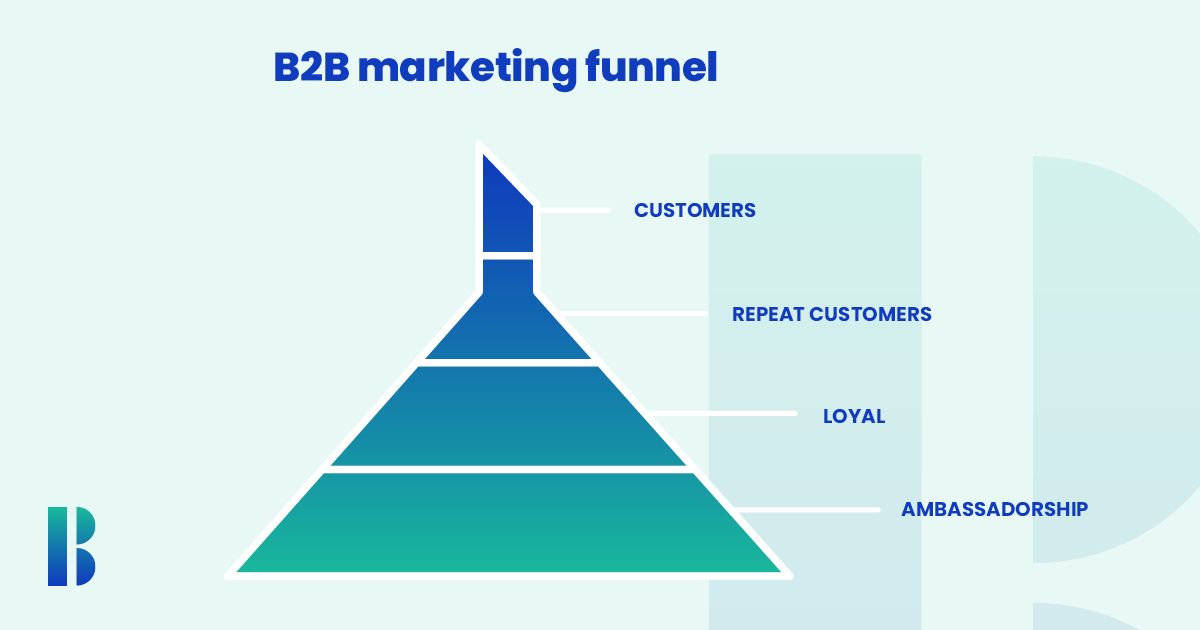
Stage 1: Customers
You’ve got your customers who have made a purchase or subscribed to one of your services. What you want them to be doing is buying more of your products. You can do this with upselling messaging and marketing that highlights your other services.
It’s relatively simple to target digital marketing directly towards them with tailored emails and targeted social media (if you can convince your sales team to offer discounts for existing customers, all the better).
Stage 2: Repeat customers
These are customers who are buying regularly from you, whether it’s the same purchase over and over, or new products and services. They're more likely to respond well to upselling marketing materials, especially if they’re rewarded or benefitting from repeating their custom with you.
Stage 3: Loyal
At this level, customers will choose you over any rivals, you are their preferred brand for what you do. They’ll respond well to your upselling marketing, will engage with the communities you might provide, and probably attend events you might hold.
Your marketing should be all about building as personal a connection as possible.
Stage 4: Ambassadorship
While loyal customers are good, what you really want them to be is so happy with you that they’ll be singing your praises and referring you to other businesses.
This can be as simple as sharing your social media posts on their own channels or giving a positive customer review, to more in-depth pieces of content like case studies or partnerships/sponsored content. They like your brand so much, they’re willing to stake their own reputations on your success.
Navigating a customer along this funnel can be tricky in B2B marketing, and will largely depend on many factors such as your product, customer service, and sales team.
The advanced: Custom B2B marketing funnels
Now both of the models we’ve provided above are by no means one-size-fits-all. The way your company is structured can change the stages and how quickly you consider a prospect to have moved between them.
For example, you might have the sales team become a part of the marketing funnel at an earlier stage. You might have different marketing funnels for different customer segments and/or personas. You might use different tactics to be more fruitful. You might... you get the gist.
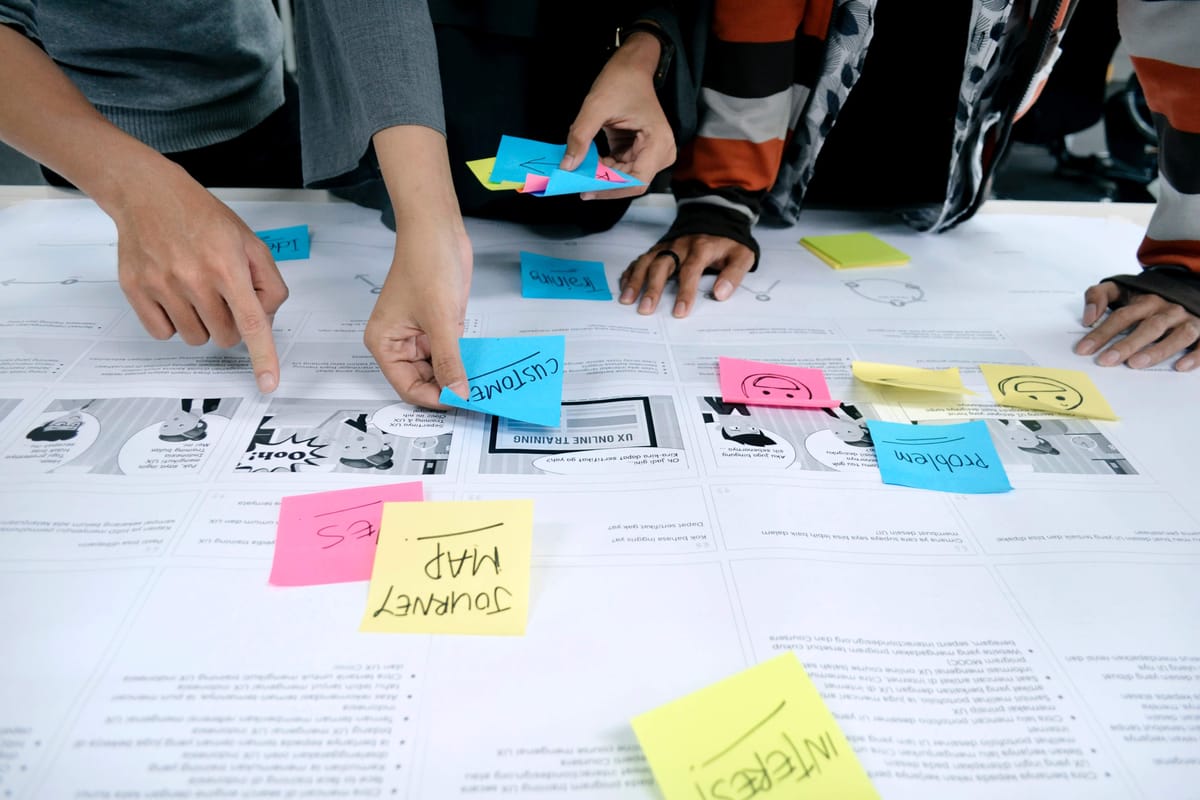
A particularly effective way of leveling up your B2B marketing funnel is to have different funnels for different forms of marketing. Below are some examples of B2B marketing funnels for different marketing forms.
The B2B email marketing funnel
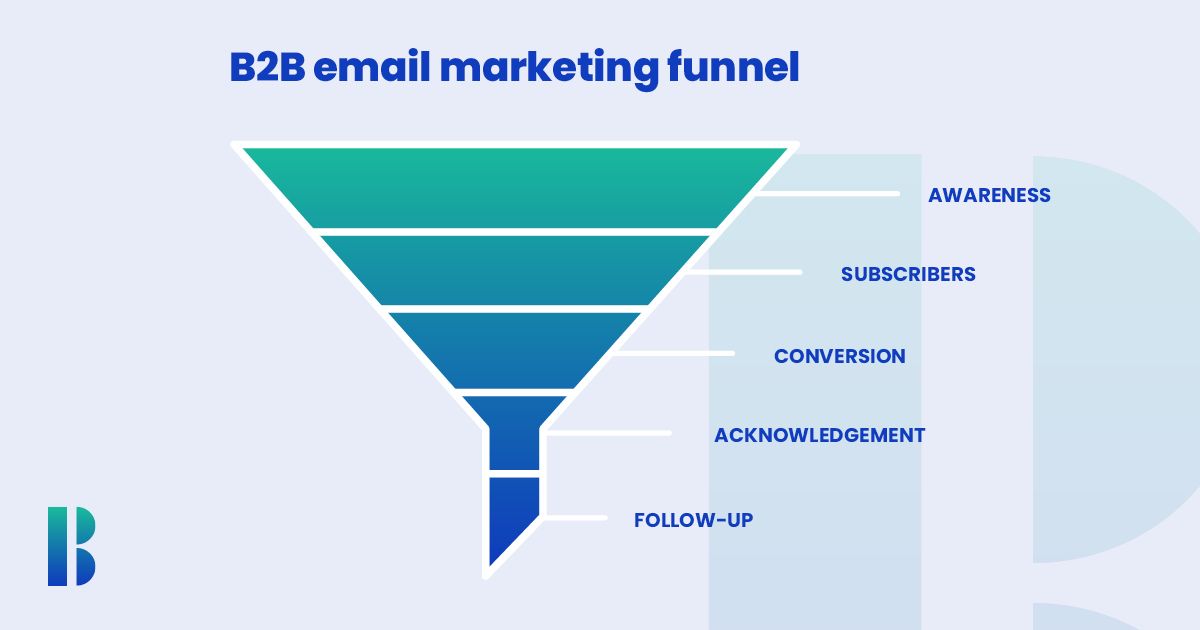
Stage 1: Awareness
Build an email list. This can be done with paid-for external lists or a campaign to encourage sign-ups through your social media or website.
Stage 2: Subscribers
Once you have subscribers, you’ll need to give them a reason to stay subscribed. This can be in the form of special offers and exclusive content.
One thing you’ll need to fine-tune at this stage is the rate of the emails. Too few, people will forget about you and unsubscribe, too many and you’ll annoy people and they’ll unsubscribe, even if the emails are valuable to them and their business.
Stage 3: Conversion
You provide an email that generates a positive response, whether it’s an agreement to an event invitation, a sales conversion, or a share of content on social media. These people should be considered to be more likely to respond well to further email marketing and you should tailor your future emails towards them.
Stage 4: Acknowledgement
Who doesn’t like to feel gratitude? Acknowledging the conversion with a thank you email can go a long way – it shows that you (or your brand) are personable and truly appreciate the time of your customers.
Stage 5: Follow-up
After a certain amount of time has passed, check in with the customer via email to see if they are happy with the product/service/event/etc. This can be a great opportunity for upselling if they are still happy with things, or it can be a time to resolve any issues if they aren’t.
The Content marketing funnel
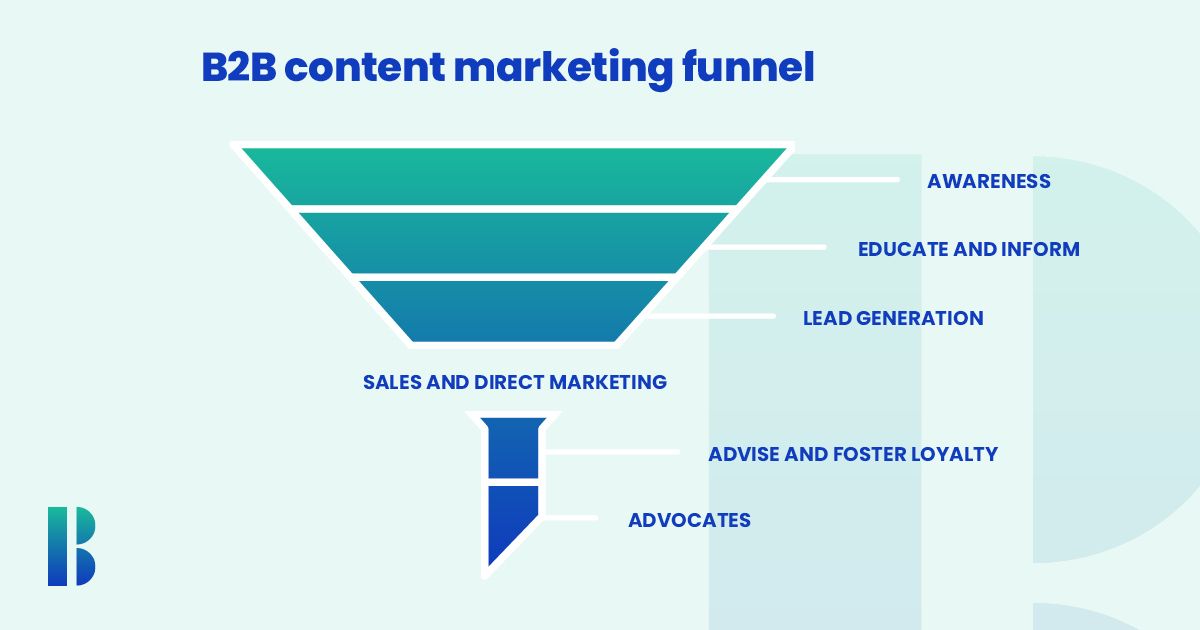
Stage 1: Awareness
You create content tailored toward attracting your target market to your site. Identify some common issues in your target market’s industry and create content that addresses them.
With proper SEO they’ll find you when they search for solutions to the issues.
Stage 2: Educate and inform
You’re providing a useful resource to educate them, you can guide them through your content to the solutions and products you provide.

Stage 3: Lead generation
Once they’re on pages related to your products and solutions, you can develop them into leads. Suggest signing up for a newsletter or see if they would want to get in touch with salespeople directly.
— Break for the sales team or direct marketing team to do their thing to allow people to become customers ---
Stage 4: Advise and foster loyalty
Provide content that allows your new customers to make the most of their new purchases or solutions.
Examples could be how-to-videos. If the product is valuable enough and they’re making the most of the products you get to form meaningful relationships, which leads to
Stage 5: Advocates
Customers who have benefited the most from your product and supporting content can form the basis of testimonials and case studies, which can be used as content in other parts of the funnel.
Tailoring your marketing funnels to different marketing channels and content allows you to measure how successful it is at each stage in a more sophisticated way.

B2B marketing funnel optimization and analytics
You've built a solid B2B marketing funnel, but the work doesn't stop there. Optimizing it for maximum efficiency is an ongoing process that requires a data-driven approach and a willingness to adapt.
This is where analytics comes into play, giving you valuable insights into the performance of your funnel at every stage.
Let's start with conversion rates
Keep a close eye on these metrics across your various touch points – website, landing pages, email campaigns, and so on. If you notice a significant drop-off at a particular stage, dig deeper to identify the root cause.
Perhaps your email subject lines aren't compelling enough, leading to low open rates. Or maybe your landing page copy needs to better resonate with your target audience's pain points.
Another crucial metric to monitor is engagement levels
Are your blog posts and social media content sparking conversations and shares? If not, it might be time to reevaluate your content strategy. Experiment with different formats, topics, and tones until you find that sweet spot that resonates with your audience.
Don't underestimate the power of A/B testing, either
Try different versions of your email subject lines, calls-to-action, or website layout, and see which variations perform better. Even seemingly small tweaks can have a significant impact on your conversion rates.
Leverage tools like heat maps and user recordings to gain insights into how visitors are interacting with your website.
Are they getting stuck at a particular point? Are there confusing elements that are causing friction?
These insights can help you streamline the user experience and remove potential roadblocks in your funnel.
And let's not forget about customer feedback
Actively seek input from your existing customers through surveys, focus groups, or even good old-fashioned conversations. Their perspectives can shed light on areas where your funnel might be falling short, as well as opportunities for improvement.
For example, if multiple customers mention that your onboarding process is confusing or your product documentation is lacking, you know where to focus your efforts. Addressing these pain points can not only improve the experience for new customers but also reduce churn and foster loyalty among your existing base.
Finally, don't be afraid to experiment and test new strategies
What works today might not work tomorrow. Stay agile, embrace data-driven decision-making, and continuously refine your approach based on the insights you gather.
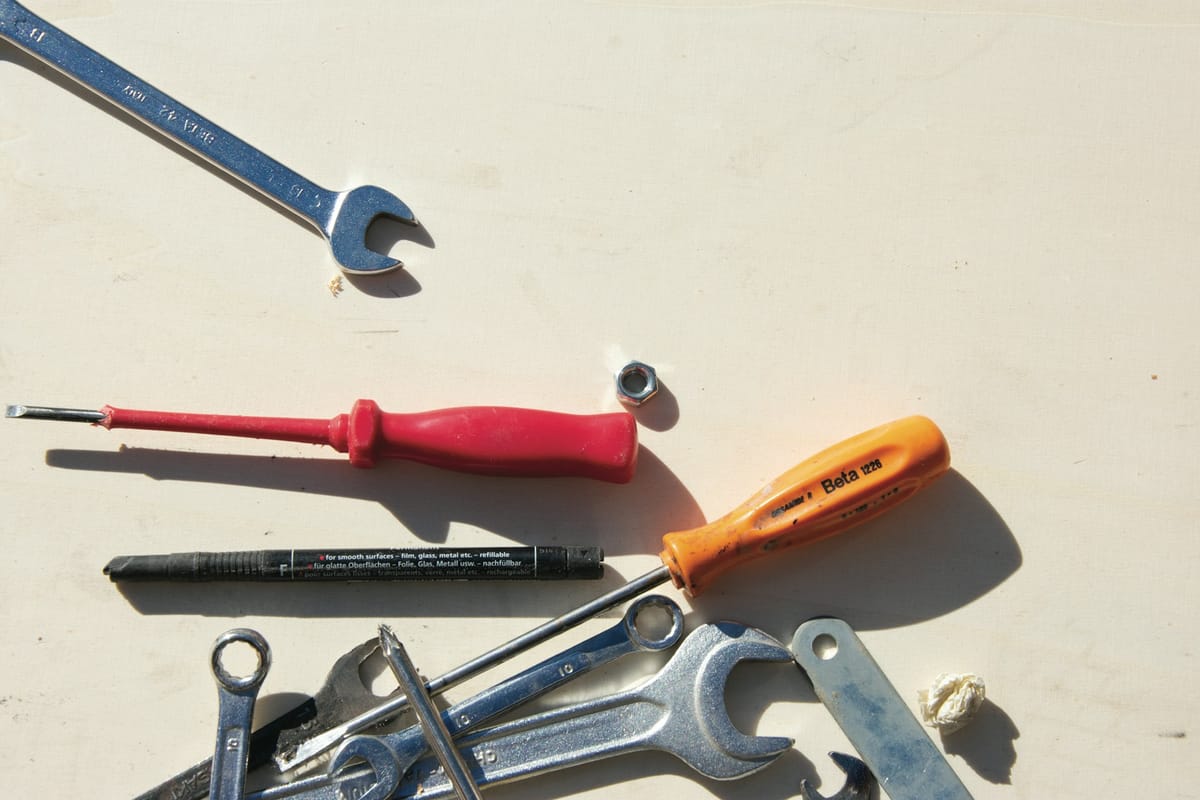
Remember, optimizing your B2B marketing funnel is an ongoing effort, but it’s one that almost always pays off. Embrace the process, stay curious, and keep those leads flowing smoothly through your well-oiled funnel.



 Follow us on LinkedIn
Follow us on LinkedIn



